Friday, 29 July 2011
Sand in the Shorts: Turmoil for Turmel
Thursday, 28 July 2011
Pajamas Media » The 5 Biggest Lies Told about Oslo Shooter Anders Breivik
By Phyllis Chesler - from Pajamas Media
5. We Can Blame Breivik’s Violence on Being Abandoned by His Father.
Many male children survive being abandoned by their fathers very well. Some do not. Norway’s Anders Breivik shares a startling similarity to Australia’s Julian Assange. The two men possess a paranoid worldview and the capacity to exact vengeance. They both have “problems with authority,” to put it mildly.
But there is something else they share. When both men were one-year-olds, their biological fathers left. InAssange’s case, he had a stepfather until he was eight years old, followed by a second stepfather. When he was eleven years old, Assange and his half-brother began living in hiding and on the run with their biological mother. This lasted for five years as part of a custody battle.
In Breivik’s case, his father, Jens Breivik, an elite Norwegian diplomat (!!!), left when he was one year old. He rarely saw Anders, and when Anders thereafter tried to meet with him, his biological father rebuffed him.
One really cannot diagnose from afar and yet some (not all) father-wounded sons, which is something I wrote about in my book About Men, scapegoat women because they are angry at the fathers who have abandoned them. Assange has been accused of being sexually violent towards women. Some father-wounded sons are close to their mothers (as Breivik clearly may be), but inside they are at war with themselves. They struggle with repressed homosexual desire which is really a desire to be close to a loving and protective father and to be a “man.” Some father-wounded sons may also super-identify with concepts of collective male strength, e.g., with Knights Templar, etc. precisely because they have no strong identification with their own fathers.
Wednesday, 27 July 2011
If anybody tries to make you pay to enter an Anglican cathedral (built by the Catholic Church) refuse and enter anyway | CatholicHerald.co.uk
Saturday, 23 July 2011
Sand in the Shorts: Duncan's Dough Nuts
I want to thank Ontario Liberal Minister of Finance Dwight Duncan. This week he set Ontarians straight by educating us on the provinces prosperity and growth under the Liberals.
What did Norway do to deserve devastating attacks? - The Globe and Mail
English: The long half-life of news - thestar.com
By Kathy English - from the Toronto Star
In 2008, citing information released by Toronto Police, an online article in the Star reported that a Toronto man was charged with the sexual assault of a pre-teen girl.
Some 14 months later, all charges against the man were dropped.
Now, not surprisingly, the man wants the news of his arrest to disappear from the Internet. He is seeking to have the Star “unpublish” its 2008 story so that it does not appear in a Google search.
“I am an innocent man,” he told me in a recent email. “I should not have to endure the grief and humiliation of that article now that the charges were dropped.”
“Anytime I apply for a new job, an employer can look up my name and there’s that damn article. The mere accusation alone is enough to convince many that an innocent man is guilty.”
I understand why this man is seeking to have this article removed from the web. While “innocent until proven guilty” is the ideal of our justice system, the reality is that those charged too often feel the taint of unjust public judgment.
But, as I explained to this man, (who I am not identifying for obvious reasons) in line with theStar’s policy on unpublishing, we do not take down online reports of criminal charges even when the charges are dropped or those charged are acquitted. But we do update these original reports once we learn of the outcome of the charges.
The Star’s policy regarding unpublishing any of its content is rooted in the view that to erase the digital record of what has been published would diminish transparency and credibility with our readers.
At the heart of Canadian justice is the principle of the open court. The fact that police laid charges of sexual assault against this man is a matter of public record — it is what happened. Erasing news of those charges won’t alter that truth.
Reports of criminal charges that are eventually withdrawn are increasingly a significant source of unpublishing requests for news organizations across North America. As I discovered in researching unpublishing for an Associated Press Managing Editors Association Online Credibility Study, these cases highlight journalism’s challenge of balancing the public’s right to know against the potential harm to an individual.
In surveying more than 100 editors across North America, I found that few news organizations consider the withdrawal of charges a valid reason to remove the original reports of those charges from their websites and archives.
“It’s not our job to expunge a story saying someone was convicted of a crime simply because a court expunged the conviction,” one editor said. “We’ll publish a follow-up on the court disposition but we won’t take the story down that was accurate when it was written any more than we would rip it out of the print editions in our newspaper library.”
Still, news organizations do have some responsibility here. The Star has a policy that stipulates it must report the outcome of any criminal charges it has reported.
There had been no follow-up reporting on this man’s case when this came to my attention.
The newsroom has now verified that these charges were withdrawn. In line with the Star’s practice, a note has been appended to the top of the Star’s original online report to make it clear when this man’s name is searched through Google that the charges were dropped.
National Post editorial board: Canadians should stand with Norway | Full Comment | National Post
By the National Post Editorial Board - from the National Post
Though many details remain unclear at press time, Norway, long an ally of Canada, has suffered a series of terrorist attacks in and around the capital city of Oslo. A powerful bomb has devastated the heart of Oslo’s government district, leaving seven dead and many more wounded. And, chillingly, a gathering of teenagers and young adults fell victim to a mass shooting, leaving at least 80 dead, many under the age of 18. A Norwegian man has been arrested. Nothing more is known about his identity, or whether he was part of a larger organization.
Norway is the last place in the world one would expect such carnage. Long after the dead are buried and the damage repaired, the Norwegian people will still be mourning their lost sense of peace and security. Their country will endure this dark chapter in its history, but they will never be the same.
Prime Minister Jens Stoltenberg addressed his nation in the hours after the tragedy, and said that Norway would not be swayed from its democratic ideals, nor naive about the danger posed by terrorism. These are wise words. Some of the great cities of the world — New York, Moscow, London — have known Oslo’s agony, but Mr. Stoltenberg is correct that it can happen anywhere, as it has previously in places as unlikely as Madrid and Bali, Indonesia
Every Canadian should take note of Mr. Stoltenberg’s words. Our country is not too small or remote to escape such murderous acts. But they should also note Mr. Stoltenberg’s inspiring strength during his country’s darkest hour. It does his people proud.
We hope all Canadians join us in offering the Norwegian people our sympathies and best wishes for the difficult days ahead.
National Post
Thursday, 21 July 2011
'The Royal Canadian Air Force helped fill the breach'
Tuesday, 19 July 2011
Who are the real fundamentalists?
Monday, 18 July 2011
Irish priests say they will not reveal confession secrets | Irish News | IrishCentral
By James O'Brien - from IrishCentral.com
Irish Catholic priests have said that they will not reveal secrets given in confession even though new legislation by the Irish government will call for it.
The new legislation will be introduced after another child abuse scandal in Cloyne, a Cork diocese came to light. As late as 2008, clerics accused of child abuse were being protected by the diocese the Murphy Inquiry found.
The Irish government has now stated that a zero tolerance law will come into effect. However, the group that represents Ireland's Catholic priests says the secrecy of the confession box must be retained.
This directly contradicts new Irish government legislation which will state that the confessional is not beyond the law.
"The point is, if there is a law in the land, it has to be followed by everybody. There are no exceptions, there are no exemptions," said Irish Children's Minister Frances Fitzgerald.
Father P.J. Madden, spokesman for the Association of Catholic Priests, however, insisted that the sacramental seal of confession is "above and beyond all else."
"If I'm breaking the law then somebody has to find a way to address that for me ... but in my own right as a priest what I understand is the seal of confession is above and beyond all else," he said.
"The seal of confession is a very sacred seal for lots of different reasons way beyond this one single issue, however serious this one single issue is," Father Madden insisted.
Irish Prime Minister Enda Kenny said on July 14 that canon law can not supersede state law.
Minister Fitzgerald said the government was firm on this point.
"This is about the law of the land. It's about child protection. Are we saying ... if a child is at risk of child sexual abuse that should not be reported? We cannot say that. The law of the land is clear and unambiguous," she said.
Bishop John McAreavey of Dromore told the Catholic News Service that the it was "unreal to suggest that the seal of confession has prevented the reporting of the abuse of children."
David Quinn, director of the think-tank the Iona Institute, said the government proposal was "unprecedented."
"This would make us the one and only country in the Western world to have such a law. Even revolutionary France in the days of its worst violence against the church did not pass a law requiring the breaking of the seal of confession," Quinn told the Catholic News Service.
He said the government "is clearly missing something that every other government can see, which is that, at a minimum, such a law is very unlikely to lead to a single conviction and, at a maximum, will be counterproductive and will make society less safe, rather than more safe."
"No child abuser will go to a priest in confession knowing the priest is required to inform the police. But cutting off the avenue of confession to a child abuser makes it less likely that he will talk to someone who can persuade him to take the next step," he stated.
Irish priests say they will not reveal confession secrets | Irish News | IrishCentralSaturday, 16 July 2011
Sand in the Shorts: Sci-Fi Stalks City Hall
I am a big fan of science fiction. A devotee of shows such as Stargate (all of them), Star Trek (ditto), Babylon 5, Primeval... So, as I watch the ridiculously slow construction of the tourist kiosk in Zwick's, and the complete lack of any progress on the new race track and exhibition grounds, I am able to understand the problem Belleville is facing.
Aaron Robinson: Why Are The Feds Bending Over Backward for the Unbelted? - Column - Car and Driver
What I remember most about Dad’s 1978 Olds Cutlass Supreme is the aroma of stale plastic, the coal smudge on the ceiling from his cigar smoke, the one mismatched Buick hubcap, and the dangling, twisted vines of seatbelts that were hardly ever used. Motivated, I think, by the highway-safety films shown in health class, we kids needled Dad to buckle up. He relented after the auto industry started packing his steering wheel with explosives. In retrospect, perhaps we needn’t have bothered.
Read more...
David Frum: Will America’s debt crisis have Canadian aftershocks? | Full Comment | National Post
By David Frum - from the National Post
Republicans and Democrats probably will reach a deal to pay America’s bills before the U.S. government runs out of cash at the end of July. Probably.But if worse comes to worst, here’s a question that few in Washington are asking: What will a U.S. default mean for Canada?
The surprising answer: If a U.S. default does not last very long — that is, less than a few days — it would likely prove surprisingly bullish for Canada.
But if the default extends itself longer, Canada would be dragged down after the United States into a catastrophic failure.
First, it’s important to understand what exactly is at risk. If the debt ceiling is not raised in time, the U.S. government will stop paying its bills sometime after July 22.
Probably, Washington will continue to pay interest on its bonds. But hospitals that have treated Medicare patients, nursing homes that house Medicaid recipients, military and civilian employees of the U.S. government — these and many others will be refused some or all of the money that is owed to them.
That will be a huge shock to the credit-worthiness of the United States. Through most of the 20th century, the U.S. government was the world’s safest risk. That would very suddenly no longer be true, prompting a search for new (and better-governed) safe havens.
Canada is one such safe haven.
Since the debt crisis took serious form last month, the Canadian dollar has gained against the U.S. dollar, more than three cents since mid-June. (And no, it’s not about energy prices. Switzerland is not an energy producer, and the Swiss franc has gained even more against the U.S. dollar.)
While America’s triple-A bond rating has been called into question, Canada’s triple-A rating remains secure — meaning that Canada’s borrowing costs could dip below those of the United States.
However — and it’s an important however — if a U.S. default continues for any substantial length of time, nobody will escape the consequences, Canadians least of all.
The U.S. government is the largest purchaser of goods and services on the planet. If it abruptly ceases paying for its purchasers, the shock will cascade through the global economy.
If the U.S. government does not pay its suppliers, those suppliers won’t be able to pay suppliers of their own — some of them located in Canada.
If unpaid U.S. government suppliers lay off workers, those workers must cut back on their own purchases, including purchases from Canada.
If the cutback in U.S. government activity slows overall U.S. economic growth (already slowed by the rise in energy prices this year), it’s hard to see how Canada does not feel the pain of the slowdown.
Canadian exports to the United States rose 22% in 2010 over the depressed levels of 2009. But a shock in 2011 could stop that progress. Three quarters of Canada’s exports go to the United States, not only energy but manufactures, foods and all kinds of services.
Canadians also sell directly to the U.S. government and to the U.S. military. Canada does not disclose figures for military exports to the United States, but it’s a good estimate that sales amount to somewhere between $1.5-billion and $2-billion annually. If that estimate is correct, we’re looking at potentially $125-million or more in unpaid military receivables over the 30 days after Default Day. And that is just one Canadian industrial sector.
The biggest concern of all is that U.S. government defaults to suppliers could trigger supplier defaults on their financial obligations — sparking another U.S. and international banking crisis.
Divided government in the United States is always a rough-and-tumble business. The Republicans who control the House of Representatives want less spending and taxing than does Barack Obama. Arriving at a compromise between the two parties was never going to be easy.
But the Republican decision to use the threat of default to get their way in negotiations escalated the confrontation in ways rarely before seen in U.S. history. The Republican decision to deploy this terrible threat has pushed the United States — and the world economy — toward a fearsome shock at a time when the world economy cannot afford any more shocks.
For Canadians watching the story unfold on cable TV, the U.S. drama may seem like somebody else’s problem. It’s Canada’s problem, too. Not at first — at first, it will be Canada’s windfall — but soon enough.
©David Frum
My path to Rome - excerpt from "That Time of Year", by Ian Hunter
Friday, 15 July 2011
6 Ways to Bring Civility Online | The Art of Manliness
All u need is one shell: for yourself. Done.”
The above comments were left on Tuesday’s post about building the Ultimate Survival Shotgun. That post was a big hit, quickly becoming one of our most popular articles of all time (thanks Creek!). But not everyone really got it—it was designed neither to be a humorous satire nor a super serious survival tutorial. Rather, it was simply supposed to showcase a fun project that also taught some of the basic principles of building a survival kit; it was meant to be an extremely cool look at a challenge a man set for himself—how to build a survival kit on a shotgun without any separate packs—and how he very cleverly accomplished the task.
Thursday, 14 July 2011
Every road has its thorn: Beware the rural menaces - The Globe and Mail
Union’s ludicrous wish list does its members no favours - The Globe and Mail
Thursday, 7 July 2011
Hastings and Prince Edward Regiment Military Museum - Learning about Quinte's military history
Here are some of the pictures from the museum...
 |
| Captain's uniform, 16th Battalion Prince Edward Militia |
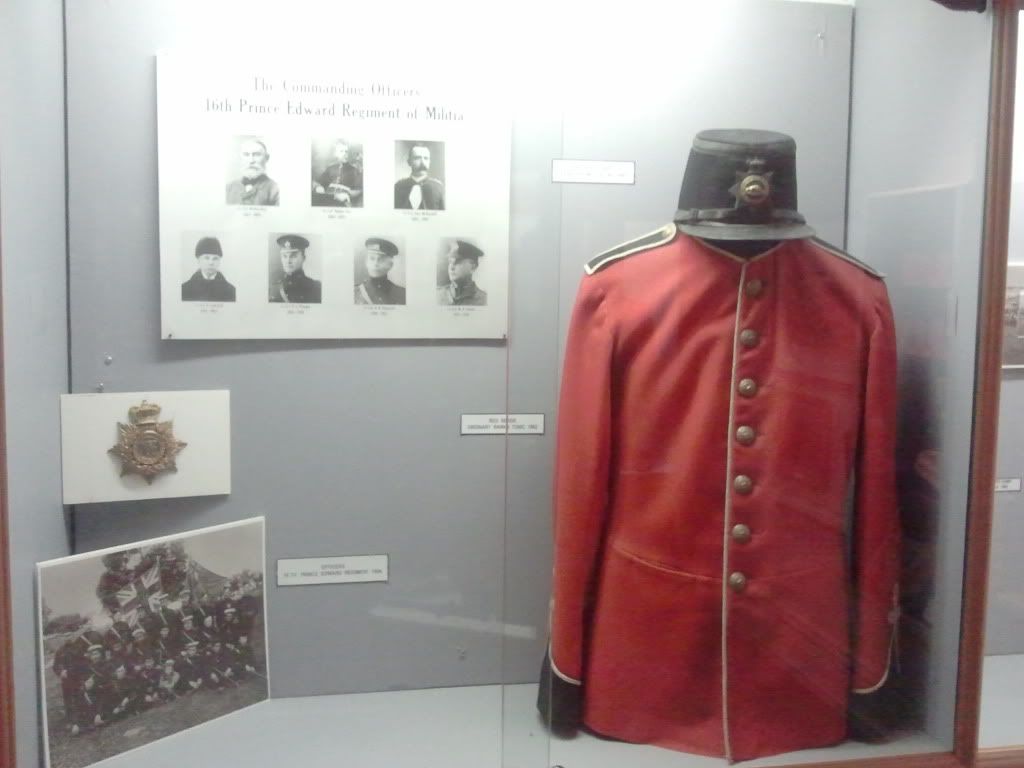 |
| 16th Prince Edward enlisted uniform |
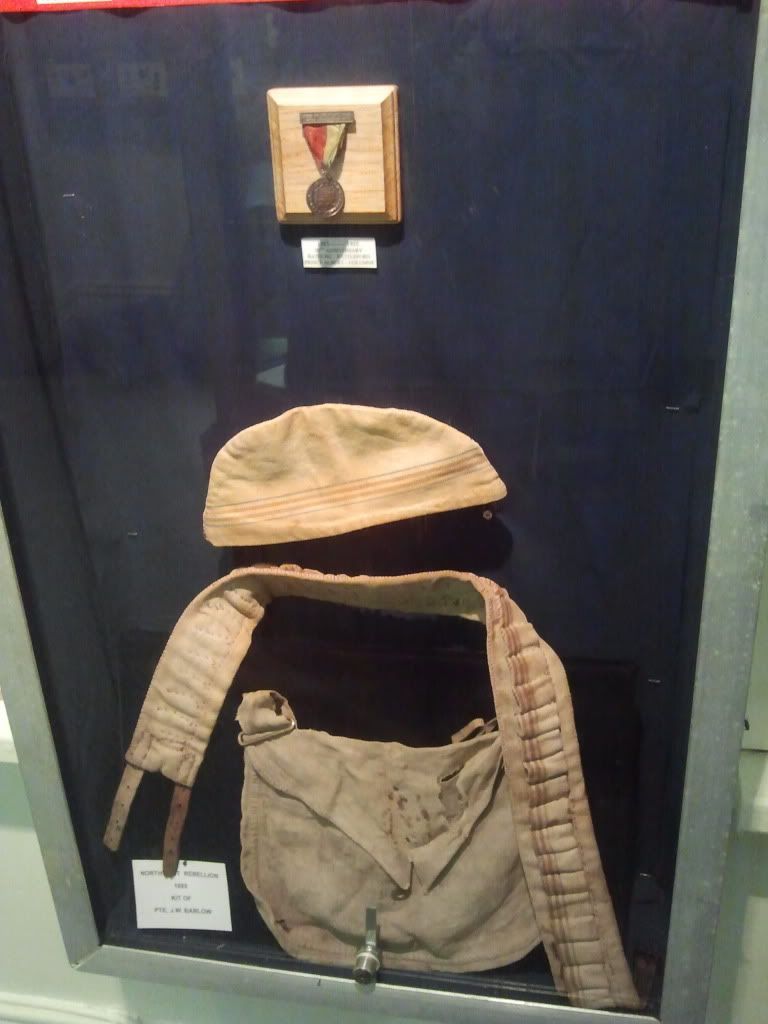 |
| Kit of Pte JW Barlow, from the Northwest Rebellion, 1885 |
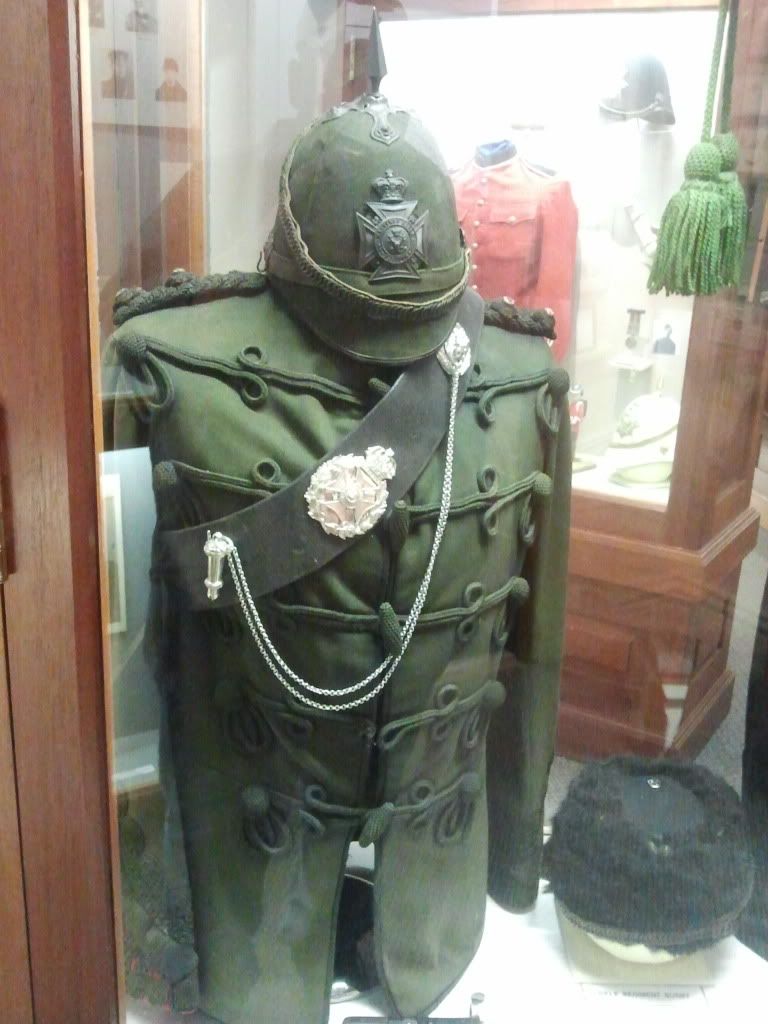 |
| Uniform of the 49th Hastings Rifles (the green is common to rifle regiments throughout the British Empire) |
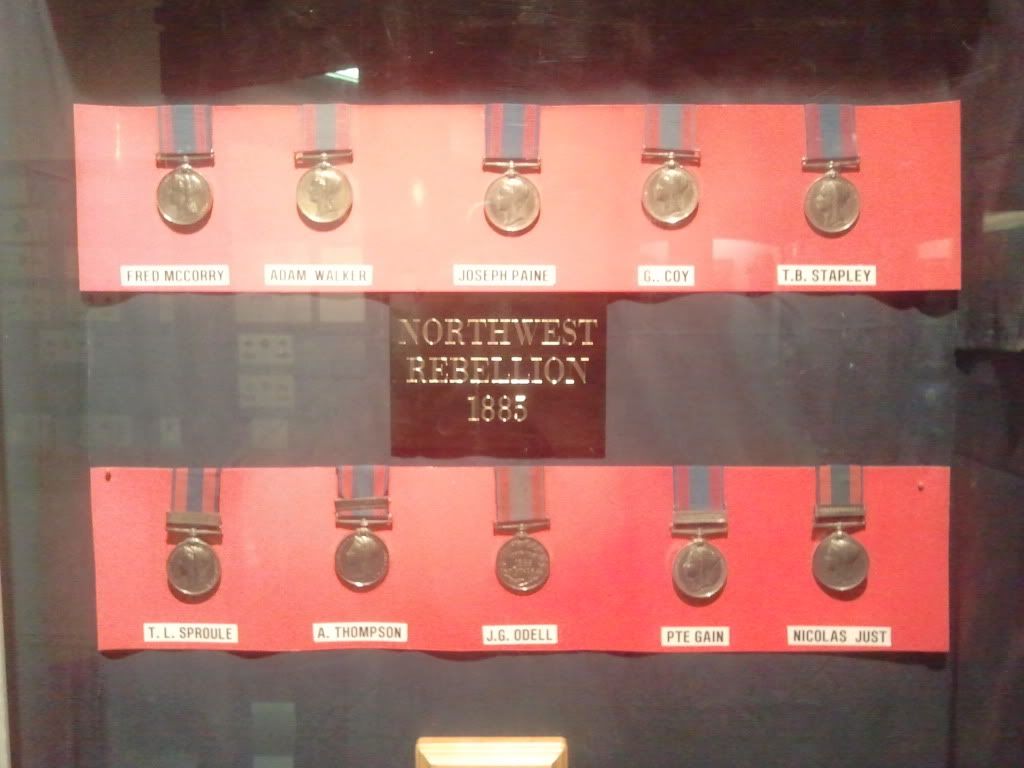 |
| Campaign Medals of local veterans of the Northwest Rebellion |
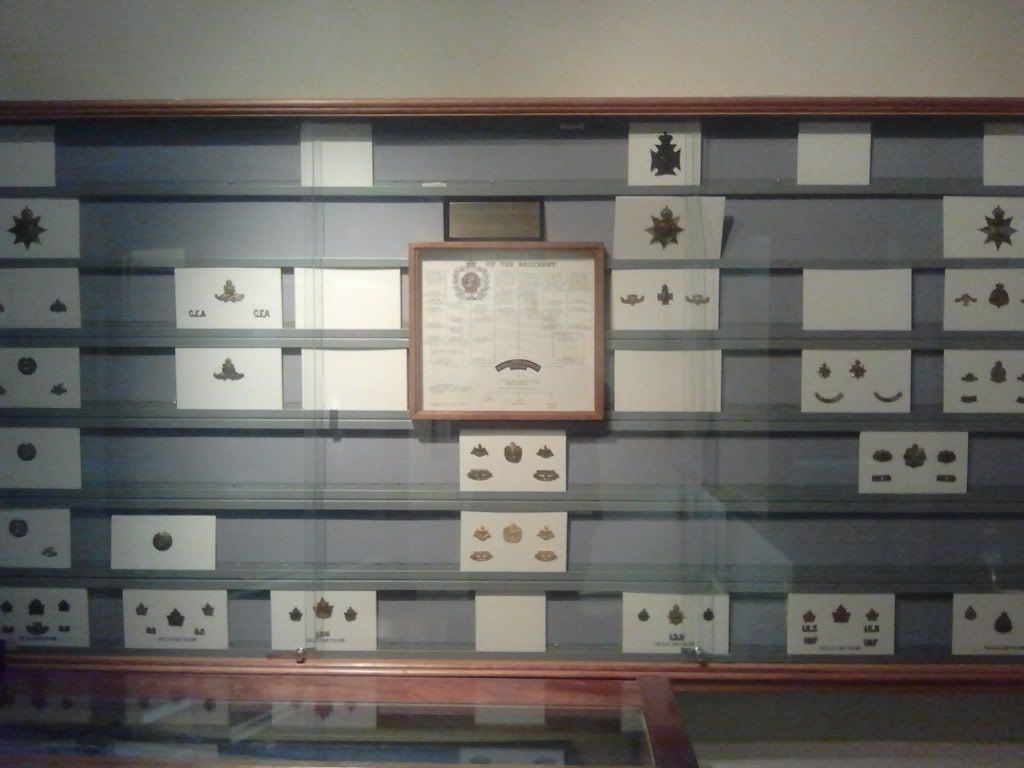 |
| This wall display contains the various badges of the units which have been combined to make up today's Hastings and Prince Edward Regiment. |
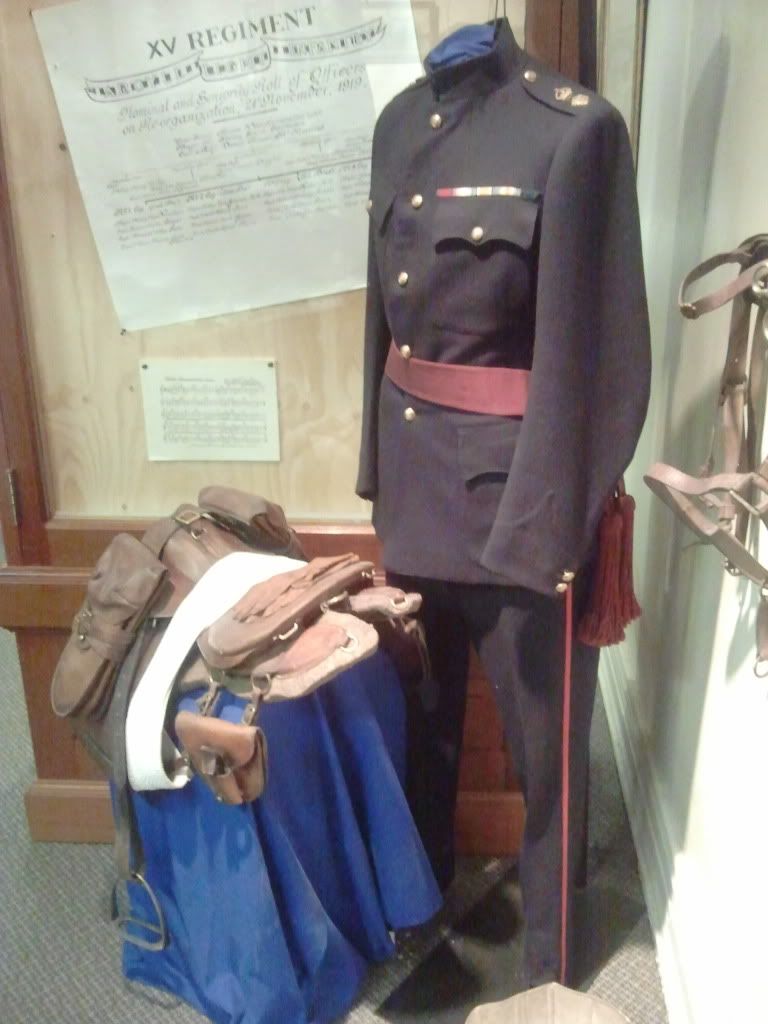 |
| The uniform and tack of Lt. Col. R. Vanderwater, D.S.O. |
 |
| World War 1 Maxim machine gun (German Empire) |
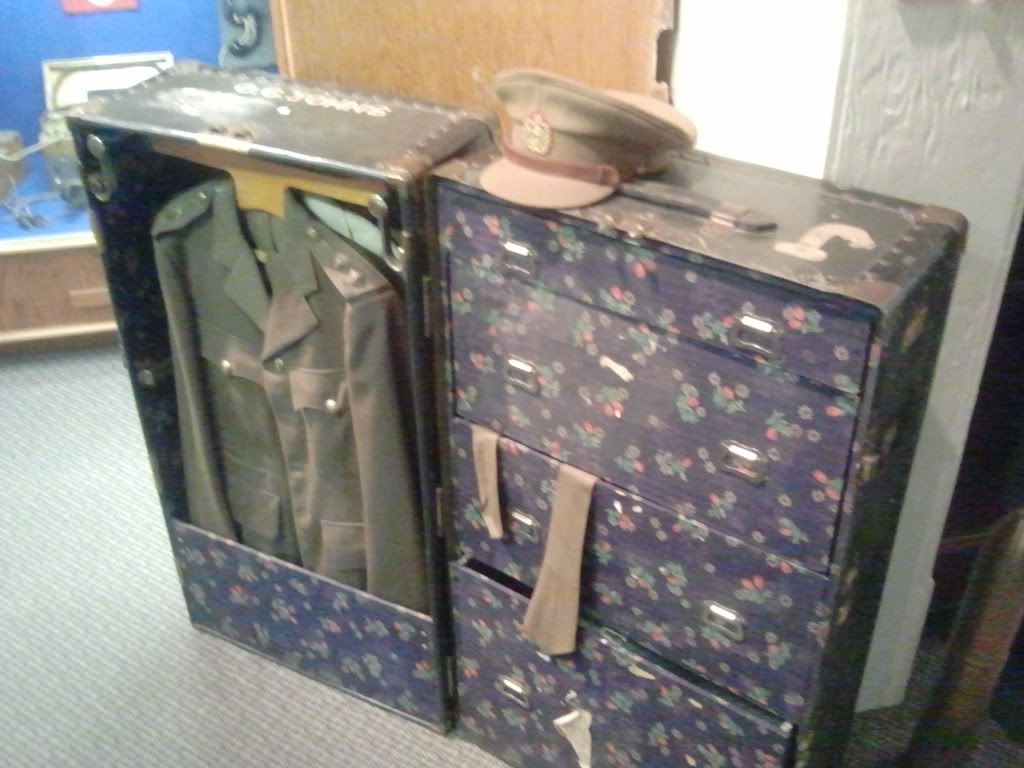 |
| British/Canadian Officer's Chest (WW I) |
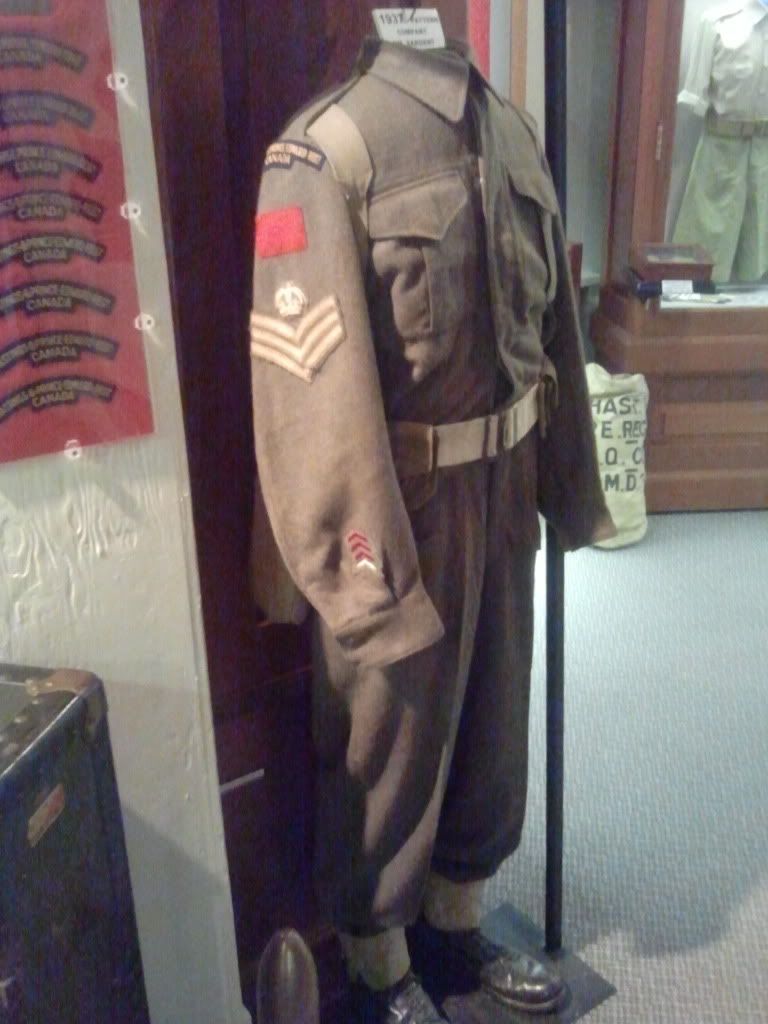 |
| Sergeant's uniform, 1937 pattern company Quarter Master |
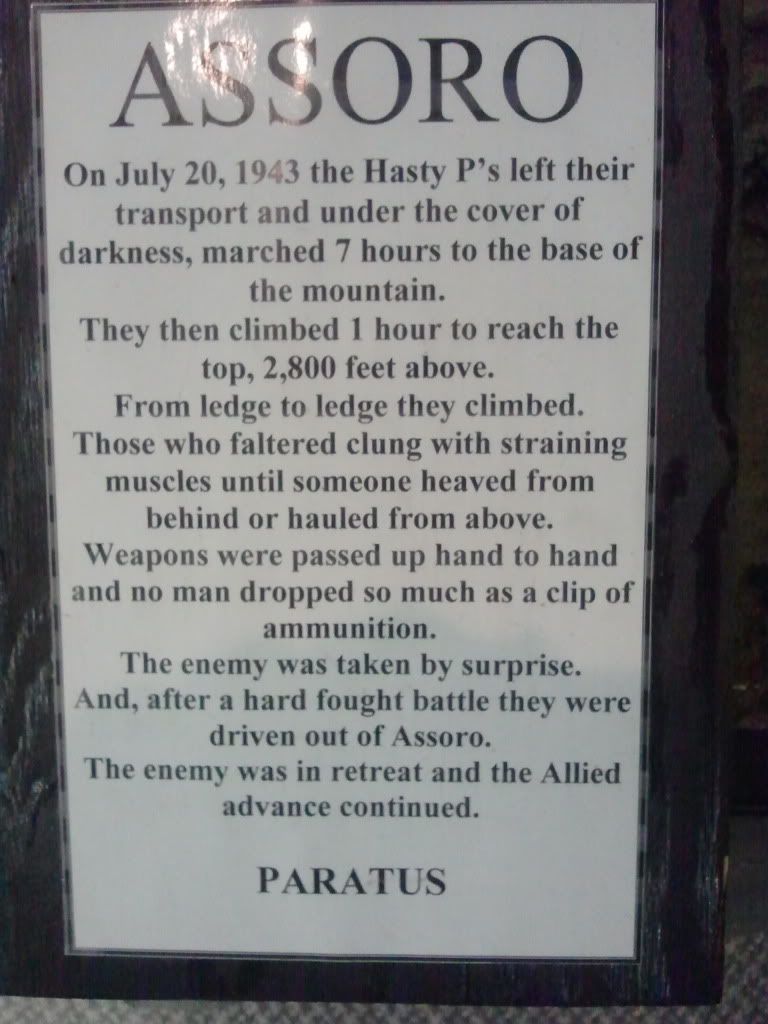 |
| The descriptive plaque attached to the model of Assoro. |
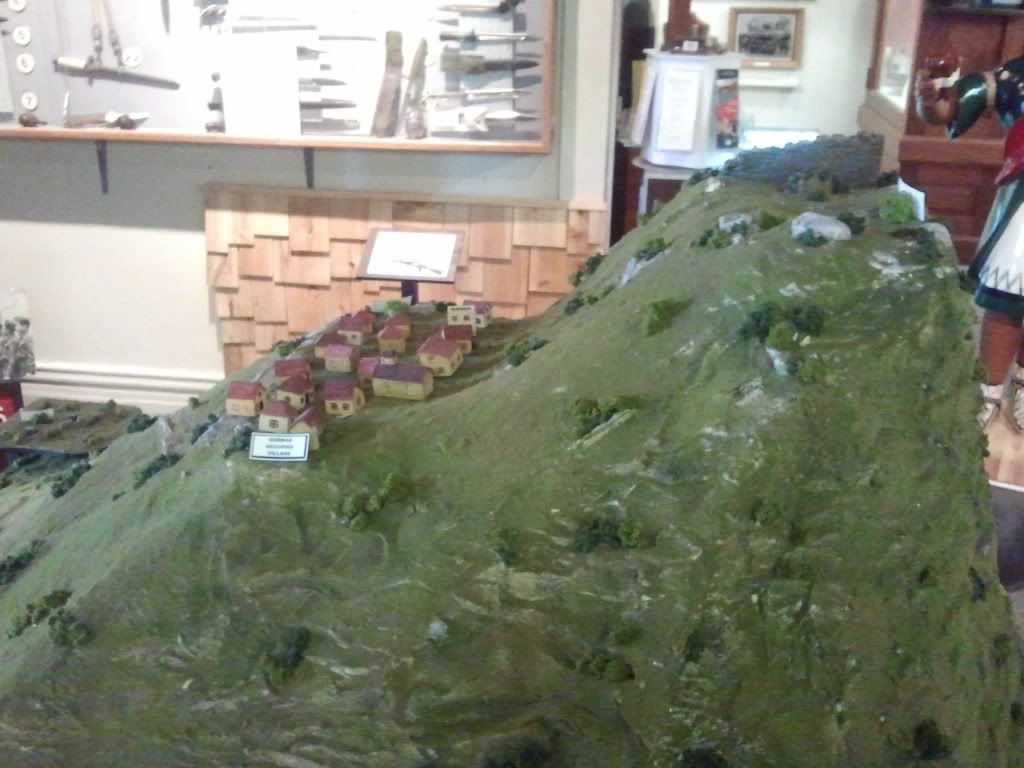 |
| Another view of Assoro, with the slope scaled by the Hasty P's on the right. The Germans had assumed any assault would come up the much gentler slope on the right. |
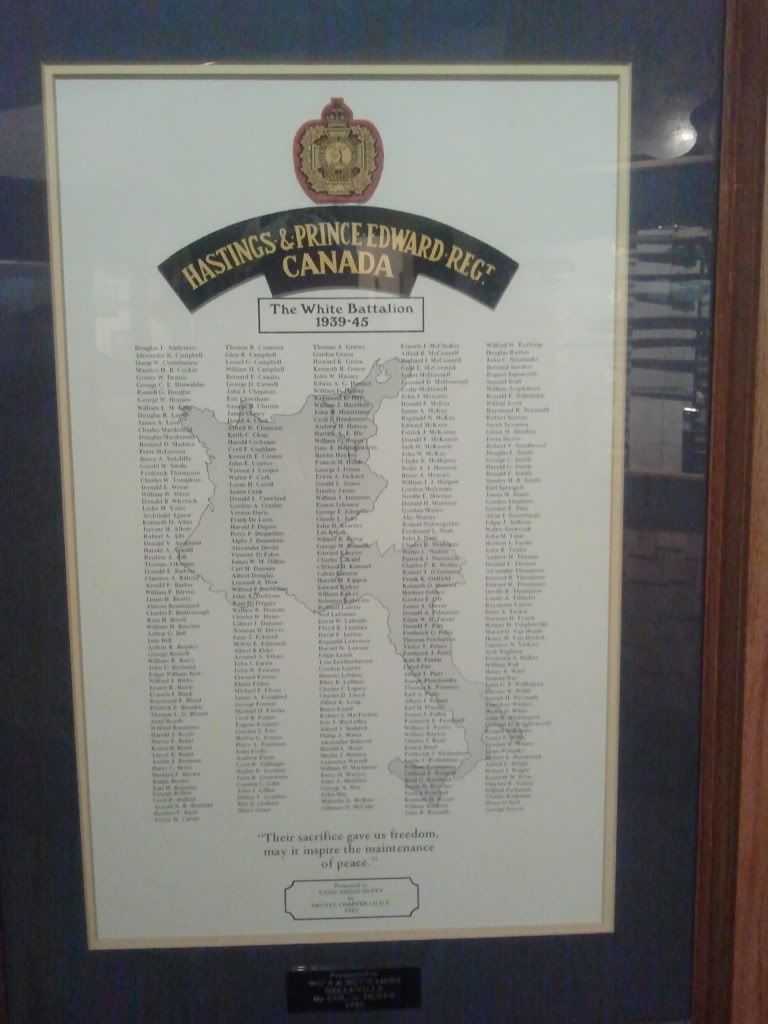 |
| Once a Hasty P, always a Hasty P. The White Battalion is composed of those who gave their lives in the service of their country. |
 |
| Chief Petawawa-Much, regimental mascot. |
Other displays include one about local Nursing Sisters, on loan from Belleville General Hospital, as well as displays of various sorts of WW I and II military communications and wepons, as well as some German militaria.
I encourage everyone to visit, and bring your children, to learn about the military heritage of the Quinte Region.




